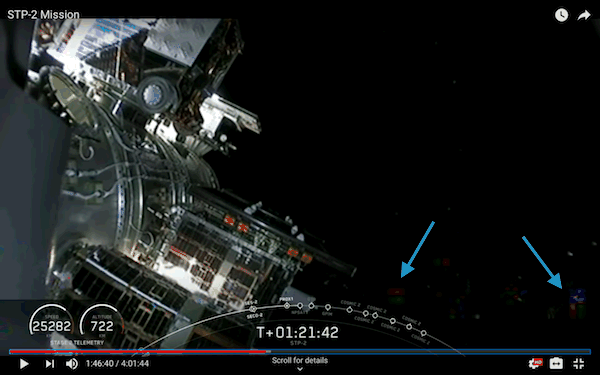In the video of the SpaceX STP-2 Mission during satellite deployment after around T+01:21:35 there are some areas that abruptly blink brightly. It's too fast and percussive to be reflections of Earth, it feels more like lights blinking on and off but that doesn't seem likely either.
What causes these blinks?
I've made a GIF to indicate the events I'm talking about, but you should watch the video to get a better feeling for how abrupt these things are.
Slow GIF:

This is meant to be cued at T+01:21:35 let's keep an eye on this in case they edit the video again.